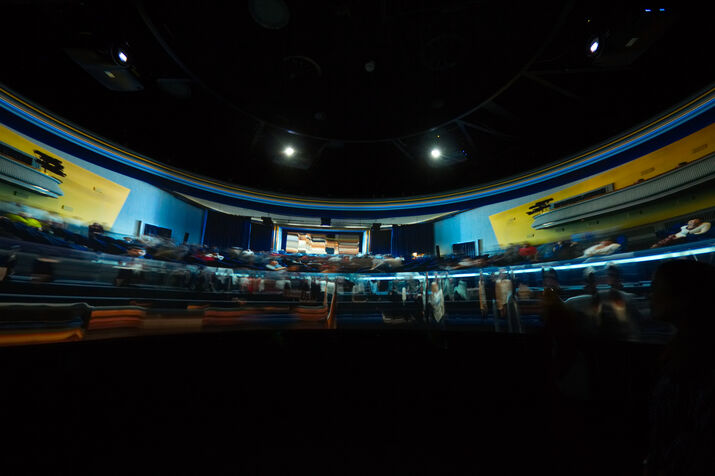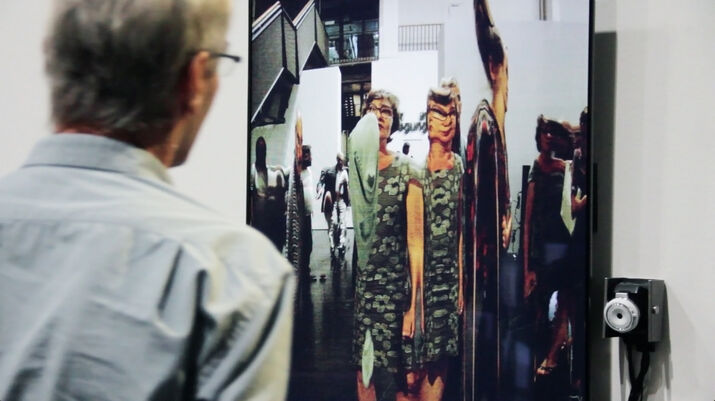

tx-transform (1999) by Martin Reinhart and Virgil Widrich
Media & Installation
Space time cut through cinema
Installation/ VR/ expanded cinema/ workshop & lecture by Martin Reinhart & Virgil Widrich
Country: Austria/Germany
EPK
What is behind the cinema screen?
In a way never before seen, “tx-reverse 360°” shows the collision of reality and cinema and draws its viewers into a vortex in which the familiar order of space and time seems to be suspended. It’ s now possible to book the project as a VR-experience, dome or cube screening, installation and workshop/presentation.
tx-reverse 360° VR & DOME
List of dome exhibitions
An installation, shot in 10K resolution and 360° with 135 participants at Babylon Berlin, reversing time and space. It can be watched on a regular cinema screen, as VR with Oculus Go, Samsung Gear VR (and others). There is also an option to experience tx-reverse 360° as expanded cinema, for example in a dome or cube. The frame rate is 30 fps.
tx-mirror (installation)
List of exhibitions
The real-time installation “tx-mirror” is a magical mirror with a camera: one can look at oneself and explore the laws of a universe in which time and space have been reversed. The left side shows the events in front of the camera about 20 seconds earlier than the right side, whereby the transition is completely continuous. The installation also pays homage to the Polish video artist Zbigniew Rybczynski, whose film “The Fourth Dimension” has inspired an entire generation of artists.
“tx-yourself” Workshop
Explanation of the main techniques to be considered when recording tx-transformations: static camera, moving camera, rotation of filmed objects. Production of different collective film recordings with the participants of the workshop. Transformation of the material and joint viewing of the final result. All participants can receive a link to download the filmed material themselves. Equipment (camera, motion control, software and com- puter) will be provided by the lecturer.
“Time bending media” Lecture
The film technique “tx-transform” and its technical and artistic precursors can be used to illustrate the limits of this common argumentation and to sketch an alternative history of the media that dispenses with anthropomorphic derivations and metaphors. This opens the way to a contemplation in which the supposedly modern, non-photographic image media can also be integrated much more conclusively. The magic of analogue film, which still lies today in its miraculous transfer of the frozen single image into the living movement, thus becomes understandable as a technical-physiological special case that cannot easily be transferred to the other visual media. Explanation of the main techniques to be considered when recording tx-transformations: static camera, moving camera, rotation of filmed objects. Production of different collective film recordings with the participants of the workshop. Transformation of the material and joint viewing of the final result. All participants can receive a link to download the filmed material themselves. Equipment (camera, motion control, software and computer) will be provided by the lecturer.
About the theory & technology
Back in the 1990s, Martin Reinhart invented a film technique called “tx-transform”, which exchanges the time (t) and space axis (x) in a film.Normally, each individual film frame represents the entire space, but only a brief moment of time (1/24 second). In the case of tx-transformed films, however, the opposite is true: each film frame shows the entire time, but only a tiny part of the space – in cuts along the horizontal spatial axis, the left part of the image thus becomes the “before”, the right part the “after”.